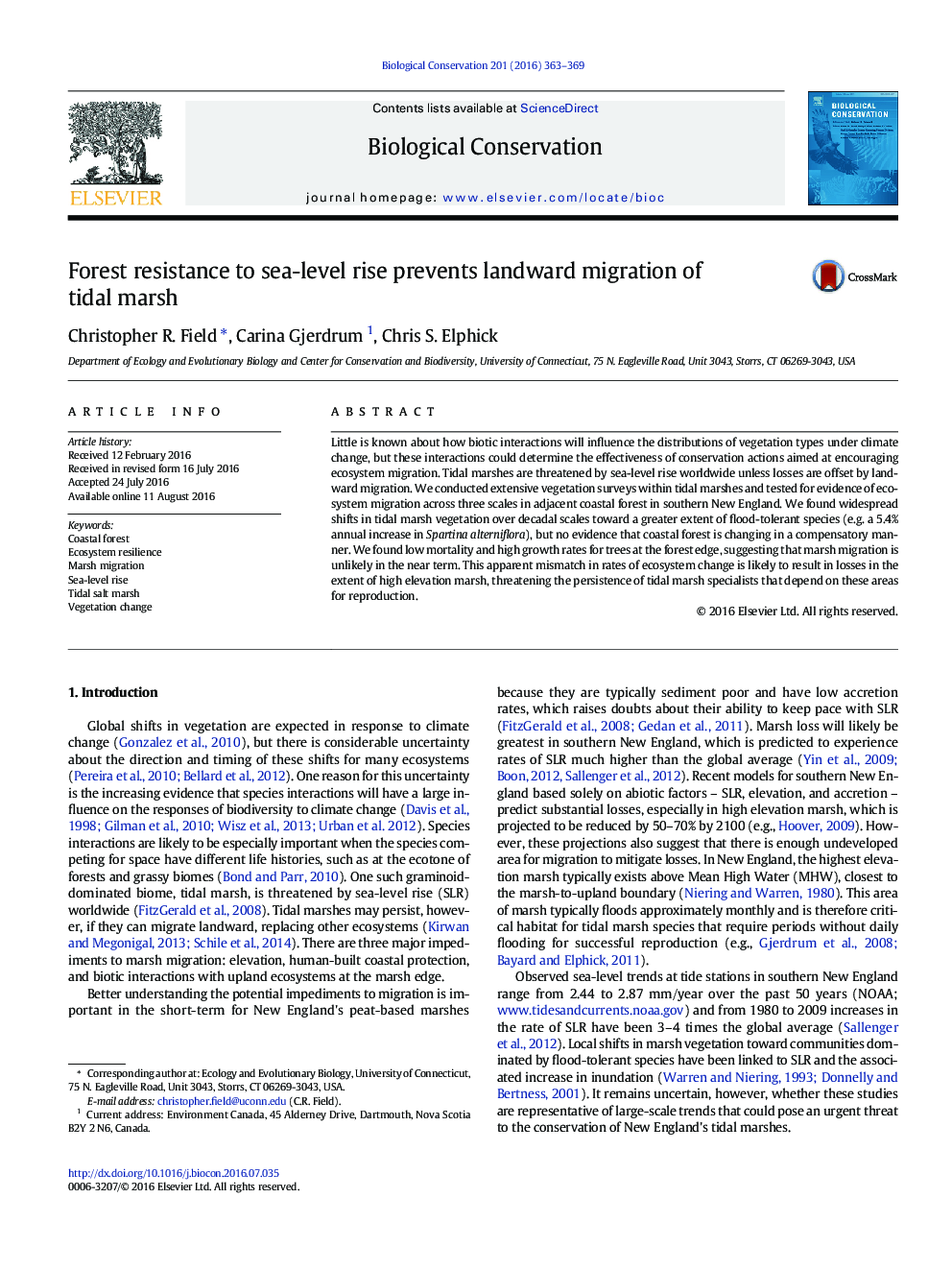| Article ID | Journal | Published Year | Pages | File Type |
|---|---|---|---|---|
| 6298239 | Biological Conservation | 2016 | 7 Pages |
â¢Tidal marshes are rapidly becoming dominated by flood-tolerant plant species.â¢Over the same period, adjacent coastal forest in is not showing signs of dieback.â¢Temporal mismatches raise questions about the potential for ecosystem migration.
Little is known about how biotic interactions will influence the distributions of vegetation types under climate change, but these interactions could determine the effectiveness of conservation actions aimed at encouraging ecosystem migration. Tidal marshes are threatened by sea-level rise worldwide unless losses are offset by landward migration. We conducted extensive vegetation surveys within tidal marshes and tested for evidence of ecosystem migration across three scales in adjacent coastal forest in southern New England. We found widespread shifts in tidal marsh vegetation over decadal scales toward a greater extent of flood-tolerant species (e.g. a 5.4% annual increase in Spartina alterniflora), but no evidence that coastal forest is changing in a compensatory manner. We found low mortality and high growth rates for trees at the forest edge, suggesting that marsh migration is unlikely in the near term. This apparent mismatch in rates of ecosystem change is likely to result in losses in the extent of high elevation marsh, threatening the persistence of tidal marsh specialists that depend on these areas for reproduction.
